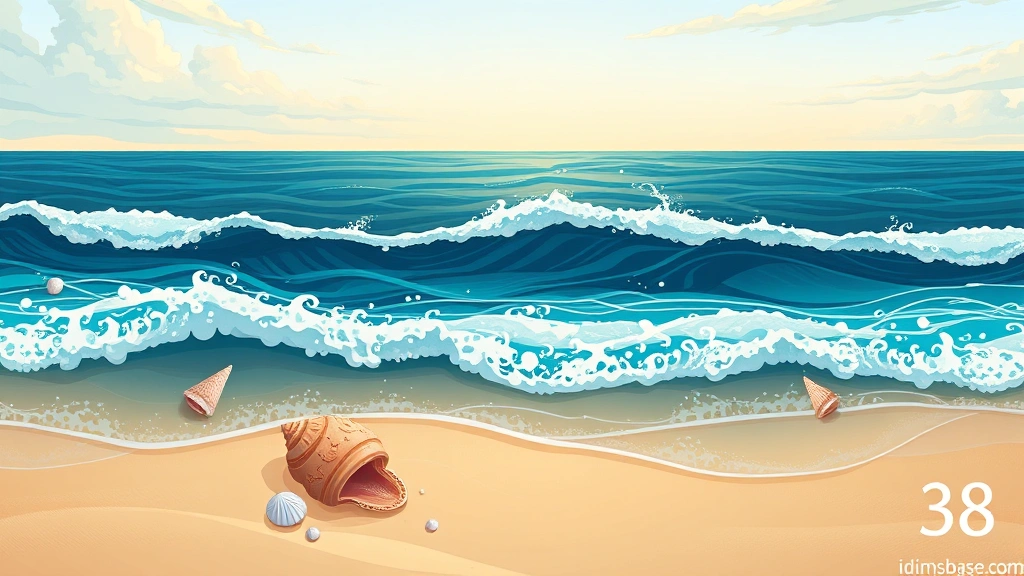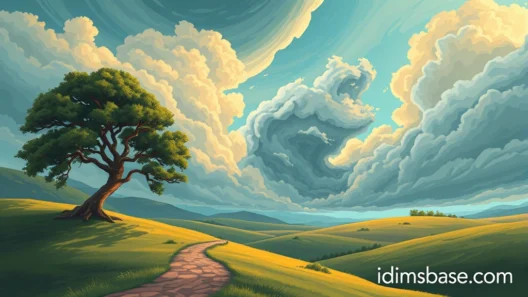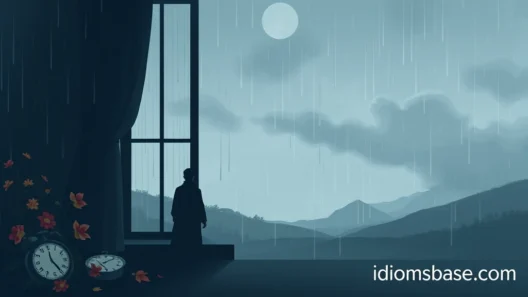Have you ever gazed out at the ocean and felt a profound sense of wonder? The sea, with its vastness and mystery, has captivated human imagination for centuries. It's no surprise that this powerful force of nature often serves as a rich source of metaphors, helping us understand complex emotions, situations, and even life itself.
Join us on a fascinating journey as we explore 38 captivating metaphors for the sea. You'll discover how this magnificent body of water can perfectly illustrate everything from swirling emotions to boundless possibilities. Get ready to dive deep into the poetic depths of language!
Metaphors for the Sea: A Deep Dive
Let's explore some incredible ways the sea has been used to paint vivid pictures in our minds. Each metaphor offers a unique perspective, revealing the multifaceted nature of this incredible element.
The Sea as a Force of Nature
- A restless giant: Imagine an enormous being constantly shifting and turning, never truly still.
- Nature's wild heart: Untamed, powerful, and unpredictable, just like the raw essence of nature.
- A liquid sky: Reflecting the heavens above, yet with its own depths and mysteries below.
- The world's ancient breath: Pulsating with life, a rhythmic inhale and exhale that sustains the planet.
- A boundless canvas: Constantly changing colors and textures, painted by light and shadow.
- Earth's teary eye: A vast, shimmering surface that seems to hold the sorrows of the world.
- A grand symphony: The crashing waves and whispering breezes creating a majestic, ever-changing melody.
- The ultimate mirror: Reflecting everything, from the sun to your own emotions.
The Sea as a Representation of Life and Emotion
- A tide of emotions: Your feelings can ebb and flow, sometimes calm, sometimes turbulent, just like the ocean.
- Life's endless voyage: You're on a journey, navigating through calm waters and stormy seas alike.
- A wellspring of secrets: Hiding countless mysteries beneath its surface, much like the hidden depths of the human mind.
- The soul's vast expanse: Your inner world, full of unknown territories and profound depths.
- A current of change: Life is constantly moving, pulling you in new directions.
- The heart's deep ocean: Containing untold emotions, some calm, some raging.
- A wave of memories: Surging forward, then receding, leaving traces behind.
- The river of time: Continuously flowing, carrying everything along its course.
- A sea of possibilities: An infinite expanse where anything can happen, full of potential.
- The ocean of despair: Overwhelming, vast, and difficult to escape.
- A tranquil pool of peace: When calm, the sea can represent inner serenity and quiet.
- A tempest of fury: When enraged, it embodies uncontrollable anger and destruction.
- The cradle of life: Where life began, symbolizing origins and beginnings.
- A graveyard of dreams: Where hopes and ambitions can be lost and forgotten.
- The fabric of interconnectedness: Everything is linked, just as all waters eventually meet the sea.
The Sea as a Symbol of Challenge and Opportunity

- A test of endurance: Navigating its challenges requires strength and perseverance.
- The great unknown: Full of uncharted territories and unpredictable events.
- A path to discovery: Leading to new lands and insights, if you dare to explore.
- A gateway to adventure: Inviting you to step out of your comfort zone and embark on exciting journeys.
- A formidable adversary: Powerful and challenging, demanding respect and caution.
- A source of renewal: Its vastness reminds us of the endless cycle of life and rebirth.
- The ultimate leveler: Treating everyone the same, regardless of status or wealth.
- A mirror to the soul: Reflecting your true self when faced with its immensity.
The Sea in Abstract and Philosophical Contexts
- The silence of depths: Profound and mysterious, holding unspoken truths.
- An eternal rhythm: Its tides and currents a constant, unwavering pattern.
- The ultimate freedom: Unbounded and unrestrained, representing liberation.
- A living library: Holding stories and histories within its ancient waters.
- The great equalizer: All rivers flow into it, all differences merge within its embrace.
- A vast cosmic consciousness: Connecting all things, a boundless awareness.
- The ultimate journey's end: Where all things eventually return, signifying completion.
Key Takeaways
- The sea is a powerful and versatile metaphor, used to describe everything from emotions to life's journey.
- Its characteristics like vastness, depth, unpredictability, and constant motion make it a rich source of imagery.
- Metaphors help us understand complex ideas by comparing them to something familiar and tangible.
- Using sea metaphors can add depth, beauty, and impact to your writing and communication.

Frequently Asked Questions (FAQ)
What is a metaphor?
A metaphor is a figure of speech that directly compares two unlike things without using "like" or "as." It states that one thing is another to create a more vivid and impactful description. For example, saying "the sea is a restless giant" directly equates the sea with a giant.
Why are metaphors important in language?
Metaphors are incredibly important because they make language more vibrant, expressive, and memorable. They help us understand complex or abstract concepts by relating them to something concrete. They can evoke emotions, create strong images in the reader's mind, and add layers of meaning to communication.

Can the sea be a metaphor for negative things?
Absolutely! While the sea often represents beauty and wonder, its powerful and unpredictable nature also makes it a perfect metaphor for negative or challenging aspects of life. It can symbolize overwhelming despair, destructive fury, or even a sense of being lost and adrift. Its duality allows for a wide range of interpretations.
How can I use these sea metaphors in my own writing?
You can use these metaphors to enhance your creative writing (like poetry, stories, or songs), speeches, or even everyday conversations. When you want to describe a feeling, a situation, or a person, think about which aspect of the sea best captures that essence. For instance, if someone is feeling overwhelmed, you might say they're "drowning in a sea of worries."
Are there other types of figurative language related to the sea?
Yes, definitely! Besides metaphors, you'll often find similes (using "like" or "as," e.g., "the waves crashed like thunder"), personification (giving human qualities to the sea, e.g., "the sea whispered secrets"), and imagery (descriptive language that appeals to the senses, e.g., "the salty spray misted my face") used when describing the ocean.
As you can see, the sea offers an endless wellspring of inspiration for language. By understanding and using these metaphors, you can truly unlock the power of words. So, next time you encounter the magnificent ocean, consider the myriad ways it mirrors the world and our experiences!






